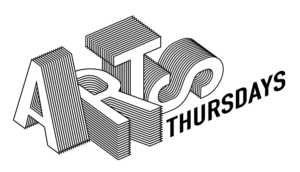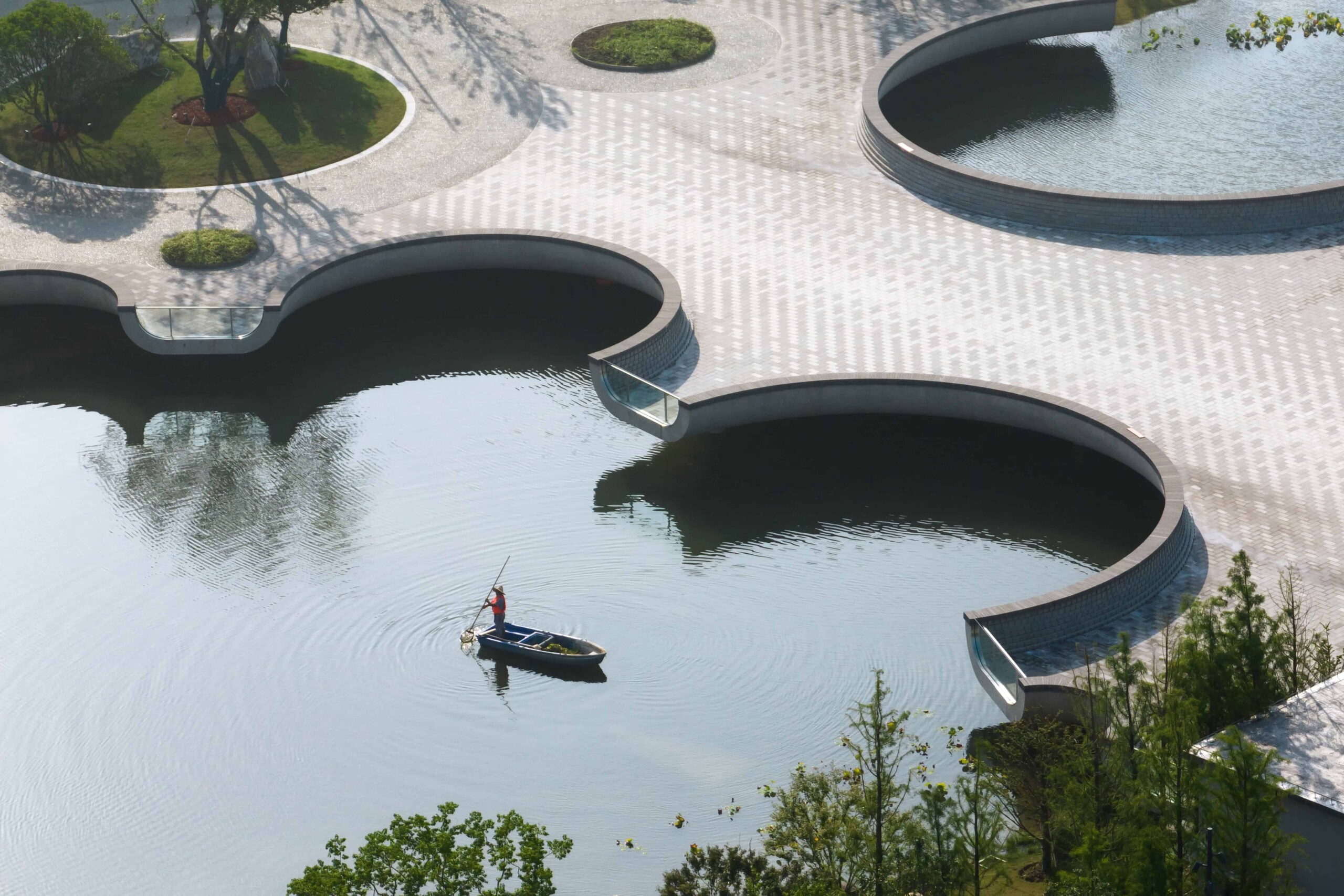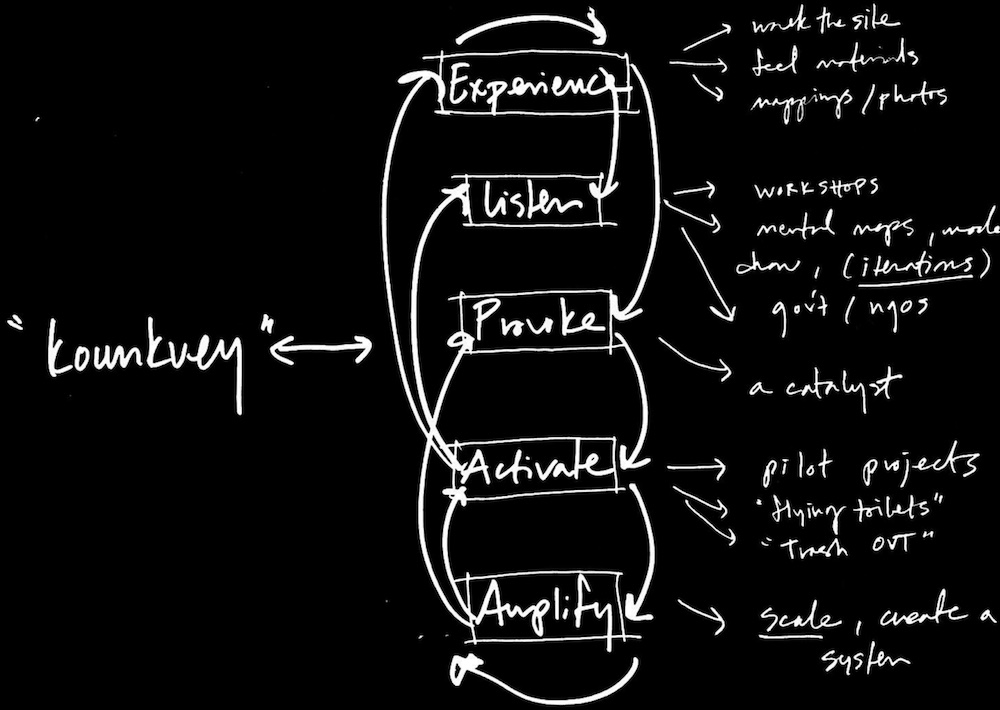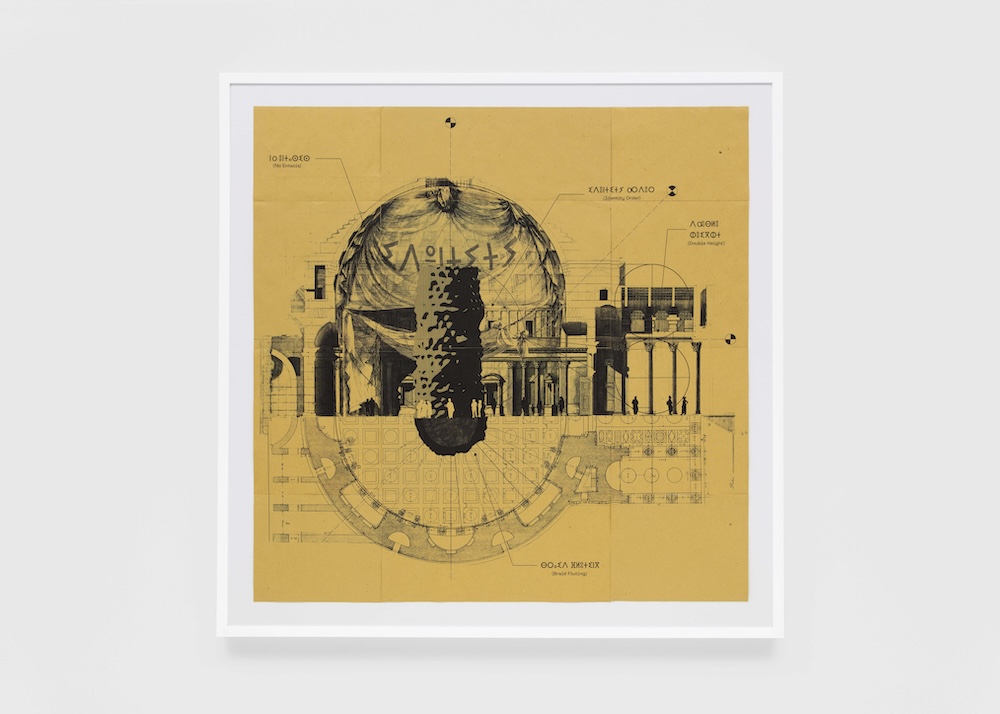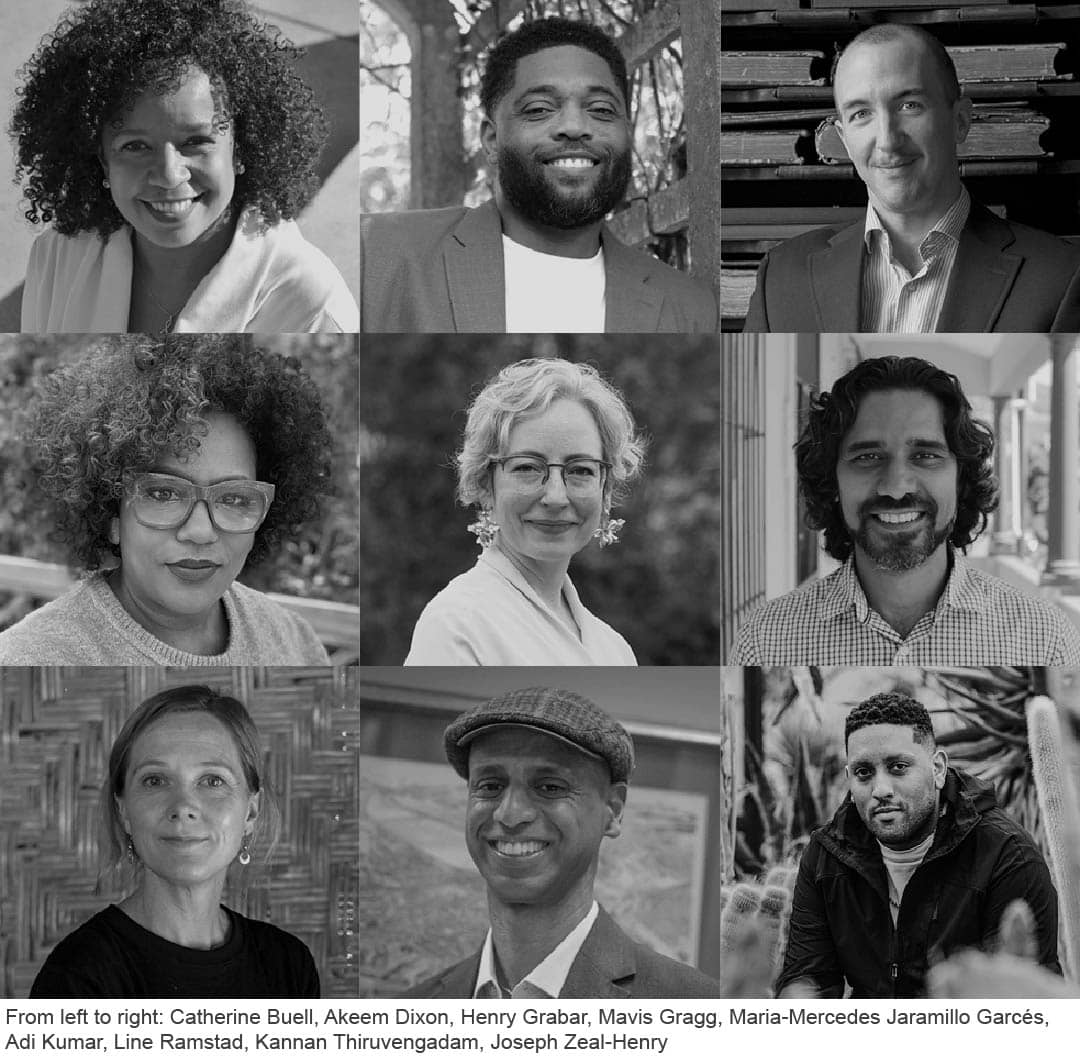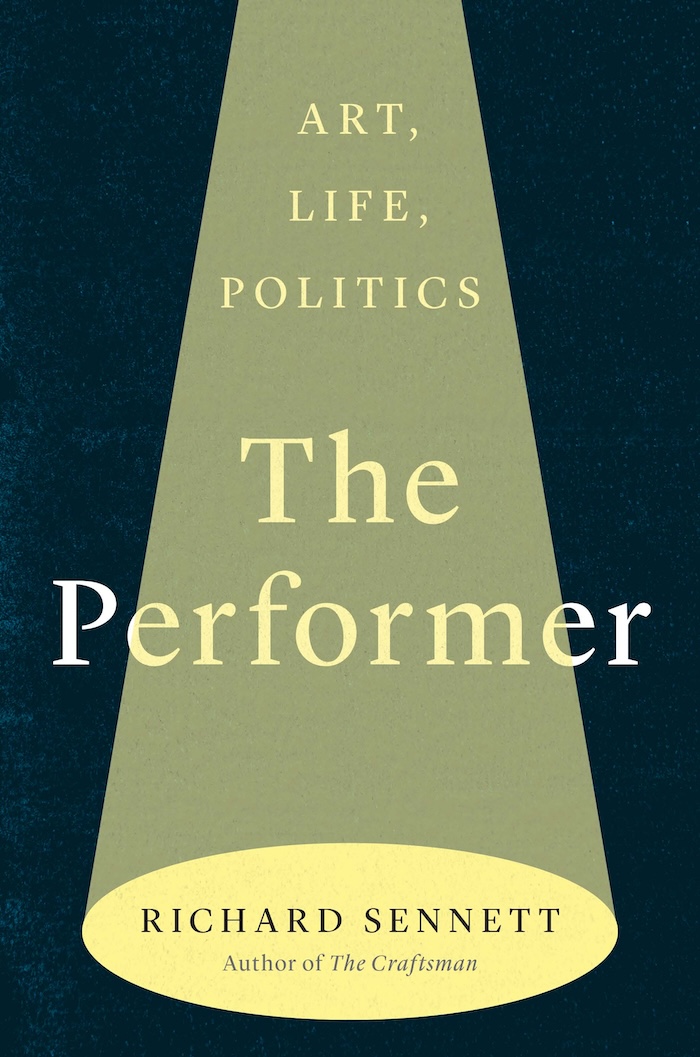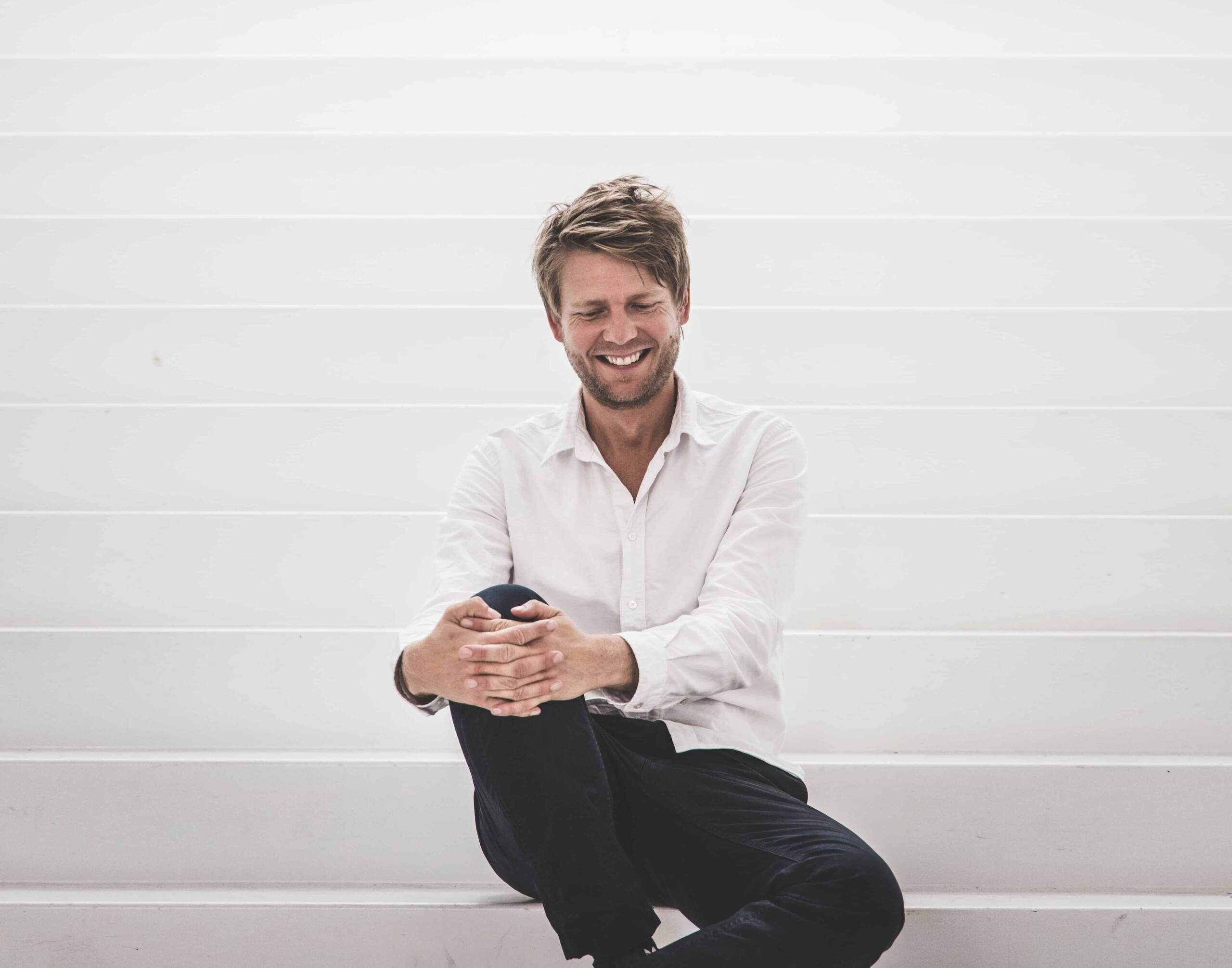Eric Höweler, “Clay: Pedagogy and Practice”
Event Description
Clay is a material origin point that precedes architecture. An abundant raw material, clay’s primary quality is its plasticity, worked through repetition and practice into a fired brick or a glazed pot. Similarly, the processes of architectural design, development, and detailing are essential operations in the spaces of both pedagogy and practice. Professor Eric Höweler will present recent projects that highlight the processes and predicaments of contemporary practice, from reimagining the site of Shanghai Expo Park to shaping spaces for democracy and materializing sites of memory.
Speaker
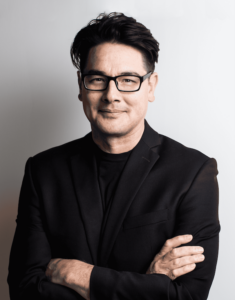
Eric Höweler, FAIA, LEED AP, is an architect, designer, and educator. He is co-founding partner of Höweler + Yoon and Professor of Architecture at the Harvard University Graduate School of Design, where he is the Program Director for the Masters of Architecture Program. Höweler’s design work and research focuses on building technology integration and material systems. His projects range from cultural buildings and mixed-use residential buildings, to public spaces and interactive environments. Notable completed projects include the MIT Museum at the Massachusetts Institute of Technology, the Memorial to Enslaved Laborers at the University of Virginia, and the Coolidge Corner Theatre Expansion in Brookline, Massachusetts. Höweler’s work has been exhibited widely, including at the Museum of Modern Art, the Smithsonian Cooper Hewitt National Design Museum in New York City, and the Venice Biennale. He is the co-author of Expanded Practice (Princeton Architectural Press, 2009) and Verify In Field: Projects and Conversations Höweler + Yoon (Park Books, 2021), and author of the forthcoming book, Design for Construction: The Tectonic Imagination in Contemporary Architecture (Routledge, 2025).
Farshid Moussavi, “Architecture As an Instruction-Based Art”
Event Description
In Fall 2024, the Druker Design Gallery will host an exhibition of drawings used to coordinate the construction process, that is, drawings that reflect the nature of architecture as an “instruction-based” art.
Construction coordination drawings differ from the sketches, perspectives, diagrams, maquettes, and other images that architects use to convey their ideas for a building. Unlike the painter or the sculptor, the architect’s final act results not in a completed work of art but in a set of instructions that enable the work of art to be realized. In this sense, an architect’s work is closer to that of a conceptual artist.
These instructions are then implemented on a site that is usually exposed to the elements and to the dynamics of often several years that it takes for the many specialist builders, roofers, carpenters, plumbers, electricians, and decorators to complete the building. Meanwhile, the architect remains both legally and morally accountable for all that follows from or is attached to his or her instructions.
This event, moderated by Farshid Moussavi, will feature presentations by several practices whose drawings appear in the exhibition. In brief remarks, the designers will reflect on the drawings and the complex processes they represent.
A reception will follow in the Druker Design Gallery.
Curator
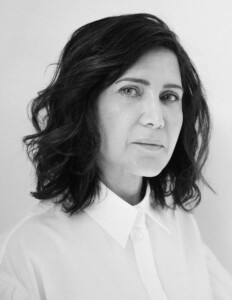
Farshid Moussavi is Professor in Practice in the Department of Architecture, Harvard University Graduate School of Design, and principal of Farshid Moussavi Architecture (FMA). In 2015, she was elected a Royal Academician. She trained at Harvard GSD, the Bartlett School of Architecture at University College London, and Dundee University. She was previously co-founder and co-principal of the London-based Foreign Office Architects (FOA), recognized as one of the world’s most creative design firms, integrating architecture, urban design, and landscape architecture in a wide range of projects internationally. Prior to this, she worked with the Renzo Piano Building Workshop in Genoa and the Office for Metropolitan Architecture in Rotterdam. Recognized as an outstanding and committed teacher who brings intellectual rigor to the discourse on architecture, she has been a visiting professor at UCLA, Columbia, Princeton, and several architecture schools in Europe; she was also the Kenzo Tange Visiting Design Critic at the GSD in Spring 2005. She taught for eight years at the Architectural Association in London and was the head of the Institute of Architecture at the Academy of Fine Arts in Vienna, where she taught from 2002 until 2005.
Moussavi is a columnist for The Architectural Review and author of The Function of Ornament (2006), The Function of Form (2009), and The Function of Style (2015), the latter of which is based on her research and teaching at Harvard.
Presenters
Iñaki Ábalos, Abalos+Sentkiewicz AS+, is founding principal of Ábalos+Sentkiewicz Architects with offices in Boston, Madrid, and Shanghai. He is professor of architectural design and director of the Laboratorio de Técnicas y Paisajes Contemporáneos (LTPC) at the Escuela Técnica Superior de Arquitectura de Madrid (ETSAM) and professor-in-residence at the Harvard Graduate School of Design.
Angela Pang, PangArchitect, is an Assistant Professor in Practice of Architecture at the GSD and the founder of PangArchitect. The firm’s recent work includes several university libraries in Hong Kong. PangArchitect has received numerous design awards including the Architect’s Newspaper Award for Best Library Design, the Green Building Award from the Hong Kong Green Building Council, and multiple recognitions from Dezeen Design Award, the World Architecture Festival Award, and the Hong Kong Institute of Architects.
Sean Canty, Studio Sean Canty, is an Assistant Professor of Architecture at Harvard University’s Graduate School of Design and the founder of Studio Sean Canty (SSC), an architecture practice based in Cambridge, MA. Canty is a founding principal of Office III (OIII), an experimental architectural collective. Selected as a finalist for the 2016 MoMA PS1 Young Architects competition, OIII has completed a Welcome Center for Governors Island and exhibited work at MoMA in New York.
Philip Schmerbeck, Herzog de Meuron, is the Studio Director overseeing the operations of Herzog & de Meuron’s studios in the US. He was the project manager in charge of Parrish Art Museum. He oversees the Powerhouse Arts project, a contemporary arts fabrication center recently completed in Brooklyn, and the Memphis Art Museum, which is currently under construction. He has gained specific knowledge working on a range of residential, cultural, and adaptive reuse projects.
Toyo Ito, Toyo Ito & Associates, Architects Tokyo-based architect Toyo Ito founded the studio Urban Robot, now Toyo Ito & Associates, Architects, in 1971. His projects include Sendai Mediatheque; Serpentine Gallery Pavilion 2002; Tama Art University Library (Hachioji Campus); ‘Minna no Mori’ Gifu Media Cosmos; National Taichung Theater; and Gaia – Nanyang Technological University. Ito received the 2013 Pritzker Architecture Prize. In 2011, he established a private architectural school, Ito Juku, which focuses on the future of cities and architecture.
Stéphanie Bru, BRUTHER Stéphanie Bru co-founded Bruther in Paris with Alexandre Theriot in 2007. Bruther received the Équerre d’Argent prize three times, the Dejean prize in 2018 from the Academy of Architecture, and more recently the Swiss Award. Stéphanie Bru is an associate professor at the Universität der Künste in Berlin and was the John C. Portman Design Critic at the GSD in spring 2022.
Christian KerezAfter an extensive career in architectural photography, Christian Kerez opened his own architectural office in Zürich, Switzerland in 1993. He is a Professor for Design and Architecture at the Swiss Federal Institute of Technology, Zürich. His built works include the apartment building on Forsterstrasse, the House With One Wall, and the Schoolhouse Leutschenbach. He is currently working on a large social housing project in São Paulo in addition to a high-rise in China.
Mack Scogin and Merrill Elam, Mack Scogin Merrill Elam Architects The two principals of Mack Scogin Merrill Elam Architects, have worked together in architecture for over forty years. The firm was founded in 1984 as Parker and Scogin. The principals have extensive experience in forming and leading multi-disciplined project teams. It is this experience combined with an unyielding commitment to meet clients’ needs with an architecture that is of the present-day that most distinguishes the firm’s work.
Chelina Odbert, “Situating Justice: Reflections on a Mission-Driven Practice”
Event Description
This presentation explores the ways in which design has a critical but often overlooked role in shaping inclusion, justice, and equity across the public realm. Because they engage in the intersections of environmental and urban systems, the design disciplines are well-equipped to address inequity, injustice, and challenges to inclusivity. The practice of design, however, is not. Relying on an outdated framework that pairs a paying client with a licensed design professional, the prevailing business model works within a system that perpetuates injustice by responding to those priorities set forth by those with access to capital.
From her days as a student at the GSD, Chelina’s goal has been to practice differently. Rather than just responding to briefs, she and her classmates started the Kounkuey Design Initiative (KDI) with the belief that another mode of practice was possible, one in which everyday people could identify challenges where they live—particularly at the intersection of environmental and social justice—and design practitioners could assemble the teams and processes to plan, design, and deliver projects.
Chelina’s talk will include a reflection on an unconventional journey to build a mission-driven practice: from high-end residential design, to the GSD, to the informal settlements of Kenya, and, eventually, to the rural and urban communities of Southern California. Chelina will explore the unique opportunities and challenges of a mission-driven practice. She will also share several flagship projects that, when taken together, begin to define what a just public realm could look like.
Speaker
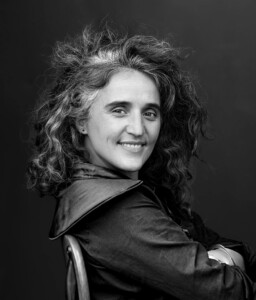
Chelina Odbert is the co-founder and executive director of Kounkuey Design Initiative (KDI), a non-profit that uses urban planning, landscape architecture, research, and community organizing to build a more just public realm. Straddling different disciplines, scales, and project types, her work is linked by a common purpose: to build community power and ensure that where you live does not determine how you live.
A leader in her field, Chelina has been recognized by the United Nations, the Aspen Institute, the Knight Foundation Fellows, and Ashoka Changemakers. Because of her ground-breaking work addressing the un-public nature of public space, she and her firm won a 2021 Emerging Voices Award from the Architectural League of New York. In 2022, KDI received the prestigious National Design Award in Landscape Architecture from the Smithsonian Cooper Hewitt Museum.
Chelina has held teaching appointments at Harvard Graduate School of Design, UCLA Luskin School of Public Affairs, and The Claremont Colleges. She lectures extensively about equitable communities and has written about sustainable development in a range of publications, including authoring The World Bank Handbook of Gender-Inclusive Urban Planning and Design and contributing to Just Urban Design, Designing Peace, and Now Urbanism.
Chelina earned a Master of Urban Planning degree from Harvard Graduate School of Design and a Bachelor of Arts with High Honors from Claremont McKenna College.
Germane Barnes, “Where This Flower Blooms”
Event Description
Chicago-born architect and professor Germane Barnes explores the connections between identity and the built environment. Barnes uses research, design, and speculation to mine the social and political agency of architecture and uncover spatial histories, presents, and futures of Black self-determination. Barnes’ Wheelwright Prize lecture documents his research of the Western architecture canon through the lens of the African Diaspora. In particular, he examines how Eurocentric histories of classical architecture have neglected the contributions of North African building practices throughout Italy during antiquity. Barnes will present Columnar Disorder, his counter-narrative to the well-established legacy of the classical triumvirate: the Doric, Ionic, and Corinthian orders.
Join us on October 8th for a conversation between Germane Barnes and members of the Wheelwright Prize Jury.
Speaker

Germane Barnes is the Principal of Studio Barnes and Associate Professor and Director of the Master of Architecture Graduate Program at the University of Miami School of Architecture. Barnes’ practice investigates the connection between architecture and identity, examining architecture’s social and political agency through historical research and design speculation.
His work has recently been exhibited in the Museum of Modern Art’s groundbreaking 2021 exhibition, Reconstructions: Architecture and Blackness in America, and the 2021 Chicago Architecture Biennial. He is a winner of the Architectural League Prize and is a Rome Prize Fellow at the American Academy in Rome. He was selected for the inaugural cohort of The Dorchester Industries Experimental Design Lab, created by Theaster Gates and sponsored by Prada. His work has also been published in and acquired for the permanent collections of international institutions, most notably San Francisco MoMA, LACMA, The Art Institute of Chicago, The New York Times, and The National Museum of African American History and Culture. His project, Griot, was widely published, as an installation in the Biennale Architettura 2023, Laboratory of the Future.
Loeb Fellowship Class of 2024 Final Presentations
Event Description
Join the Loeb Fellowship Class of 2024 as they reflect on their year as Loeb Fellows at the GSD and at Harvard, and as they look ahead to bringing their experiences back into their communities, and expanding their impact in the world.
The 2024 Loeb Fellows are nine innovators who work across climate justice, cultural infrastructure, post-disaster support, land ownership reform, and other fields that engage with the built environment and social outcomes.
This event is open to the public and can be watched online on the GSD and Loeb Fellowship websites via livestream . Following the presentations is an in-person reception at the GSD.
Richard Sennett, “Stages and Streets: Where Performances Happen and Why They Happen Where They Happen”
Speaker
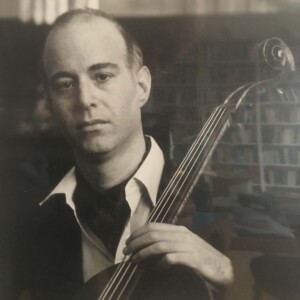
Richard Sennett began life as a professional cellist. He then became a writer on cities, combining architecture with the social sciences. His new book, The Performer: life, art, politics puts together the two strands of his experience. In addition to The Performer, Richard Sennett is author of The Fall of Public Man, Flesh and Stone, The Corrosion of Character, and The Craftsman.
Dan Stubbergaard, “City as a Resource – Cobe’s Current Works on the City”
Speaker
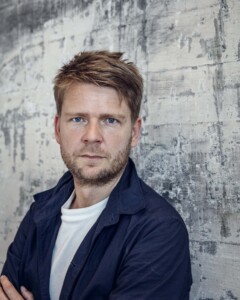
Dan Stubbergaard, who is trained as an architect from The Royal Danish Academy of Fine Arts, School of Architecture, in Copenhagen, founded Cobe in 2006. Inspired by the transformation of Copenhagen from an industrial port city to a beacon for livability and sustainability, he is the leading figure in Cobe’s work to create surroundings that actively contribute to extraordinary everyday life. Stubbergaard believes architects have a profound responsibility to create resilient, long-term solutions that improve life–cities, buildings, and landscapes that are made to outlast our generation.
His research focuses on investigating solutions, tools, and methodologies across several topics or themes of interest, including resilient urban development, green mobility, transformation and reuse, new ways of building, social responsibility, urban nature, and longevity. Having received national and international acclaim for his work, including the C.F. Hansen Royal Medal from the Danish Academy Council in 2020, Nykredit’s Architecture Award in 2012, and the Golden Lion at the Venice Biennale in 2006, he has designed and completed award-winning projects globally. Two projects of significant note are the Nordhaven project (Copenhagen, DK) from 2009 onwards that effectively converted a former industrial shipyard into an arguably more sustainable urban district with pedestrian and bike-friendly infrastructure, and the Paper Island project of 2016 to 2023 (Copenhagen, DK), the conversion of a former industrial site into a vibrant inner-city neighborhood, and with skillful handling of different building scales and elements of the public realm. What is particularly impressive in his projects is the consistency with which he deals with integrating the potential of landscape as an organizing instrument, creating humane environments, privileging reuse and repair as a strategy and developing compelling narratives through systemic thinking.
Elizabeth K. Meyer, “Unsettling Sustainability – Landscape Laboratories as Experimental and Experiential Grounds”
Event Description
Meyer, the inaugural faculty director of the University of Virginia’s transdisciplinary Morven Sustainability Lab, will present an overview of how landscape architectural design thinking is at the core of the strategic planning process for this 3000-acre rural landscape on the peri-urban edge of Charlottesville. She will describe how the socio-ecological history of this former plantation and indigenous tribal lands is shaping future research questions, student engagement programs and community collaborations. Additionally, Meyer will share a vision for the Morven Sustainability Lab that positions it within the context of a new generation of landscape labs where landscape architects—working with architects, planners, anthropologists, scientists, and environmental humanities scholars—are co-creating living learning landscapes capable of inspiring a new generation of caring climate activists.
Speaker

Elizabeth K. Meyer, FASLA, is a landscape architectural professor at the University of Virginia where she has served as Department Chair and Dean of the School of Architecture. First, as a practitioner working with EDAW and Hanna/Olin and consulting with MVVA on sites such as the National Zoo, the GW Parkway, Bryant Park, Wellesley College campus, UVA’s central grounds, the St. Louis Gateway Arch grounds, and the White House Grounds, and since the late 1980s as an academic, Meyer has been involved with cultural landscapes that entangle social histories and ecological processes. Her expertise has been recognized through appointments to the US Commission of Fine Arts and the Dumbarton Oaks Garden and Landscape Studies Senior Fellows. In 2023, Meyer received the Thomas Jefferson Award, the highest scholarly honor bestowed on UVA faculty. For the next four years, as the inaugural faculty director of UVA’s Morven Sustainability Lab , Meyer will lead a multidisciplinary, all-university cohort of faculty, staff, and community members to shape research, teaching, and community engagement programs for a 3000-acre rural property on the periphery of Charlottesville that acknowledge the site’s complicated history while reimagining the site’s future.
Daniel Fernández Pascual, “Being Shellfish: Architectures of Intertidal Cohabitation”
Event Description
Tidal zones are liminal spaces that challenge the ecological, legal and financial thresholds of coastal areas. They appear, disappear, reappear, and constantly change in size and chemistry, while shaped by new human-made seasons of wetland draining and ocean pollution. Following CLIMAVORE, a framework that investigates ways of metabolizing climate breakdown, these littoral spaces are at the core of entanglements between risk and social security, profit margins and contamination struggles, geological processes and weather events; between what is used and what is refused. Thinking with waste seashells and beach-cast seaweeds allows us to expand the possibilities of caring for coastal ecologies, while sensing and monitoring human actions affecting them. As awareness about the environmental footprint of construction and the ‘mitigation’ of its associated toxicities increases, transitions to other forms of building may connect to materials from intertidal origin that can also contribute to addressing the broken food chain. Seaweeds and bivalves have been key in human and nonhuman diets, and used as building substrate across geographies over millennia. Their role in providing nourishment and shelter has supported coastal dwellers to invent unique forms of collective usership through cultivation, harvest, sourcing, processing; and building techniques such as thatching, cladding, insulation, and plastering. Both ingredient and material, they can advance an architecture for the tidal commons.
Speaker
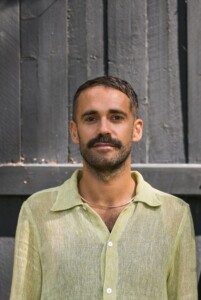
Daniel Fernández Pascual is Senior Research Fellow and one of the Principal Investigators at CLIMAVORE x Jameel at RCA. He holds an MArch from ETSA Madrid, an MSc in Urban Design from TU Berlin and Tongji University Shanghai, and a PhD from the Centre for Research Architecture, Goldsmiths, University of London. In 2013 he co-founded Cooking Sections with Alon Schwabe. Based in London, their work explores systems that organize the world through food. Using installation, performance, mapping and video, their research-based practice operates within the overlapping boundaries of architecture, visual culture and ecology. Since 2015 Cooking Sections are working on multiple iterations of the long-term CLIMAVORE project, exploring how to eat as humans change climates. Cooking Sections was part of the exhibition at the U.S. Pavilion, 2014 Venice Architecture Biennale. Their work has also been exhibited at Los Angeles Public Art Triennial; Carnegie Museum of Art, Pittsburgh; Arthur Ross Architecture Gallery Columbia GSAPP, New York; P.5 New Orleans Triennial; Sharjah Architecture Triennial; Tate Britain and Serpentine Galleries, London; Manifesta12, Palermo; Storefront for Art & Architecture, New York; Lafayette Anticipations, Paris; SALT, Istanbul; and have been residents in Headlands Center for the Arts, California; and The Politics of Food at Delfina Foundation, London. Published books include The Empire Remains Shop (Columbia Books on Architecture and the City, 2018), Salmon: A Red Herring (isolarii, 2020) and Offsetted (Hatje Cantz, 2022).
Timothy Archambault, “The Silent Echo: Architectures of the Void”
Event Description
Architect, composer, and musician Archambault will give a lecture on the symbiotic relationship between the void, Indigenous and Modern Architecture, Music Archaeology, and the process of revitalizing traditions within Indigenous flute music. The lecture concludes with a flute performance showcasing a synthesis of tradition and innovation, incorporating existential themes. Join us for an enriching experience that delves into cultural retrieval, the interconnectedness of space, and the enduring power of sound.
Speaker
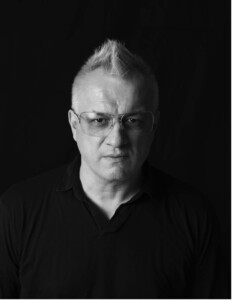
Timothy Archambault, a Miami-based polymath with over 30 years of international architectural experience, serves as the Director of Americas for Oppenheim Architecture. While acquiring degrees in architecture and fine arts from the Rhode Island School of Design, he studied music theory at Brown University. Before joining Oppenheim Architecture, Archambault contributed to significant projects with OMA, including the MahaNakhon Tower (Bangkok), the Prada NY store, and the Lehmann Maupin Gallery (NY). Additional notable projects encompass the Wyly Theatre (Dallas) with OMA/REX Architecture, the Walt Disney Concert Hall (LA), and the Guggenheim Museum Bilbao with Frank O. Gehry & Associates.
Beyond his architectural achievements, Archambault is an Indigenous flutist and composer. His repertoire includes twentieth-century Indigenous music, contemporary Indigenous compositions, and traditional Canadian Algonquin flute songs. Several of his recordings are archived in the Smithsonian National Museum of the American Indian. Archambault is the Hereditary Senator of the Kichesipirini Algonquin First Nation, a member of the Métis Nation of Quebec, and the First Nations Composers Initiative. He co-founded thecreativedestruction, a contemporary art collaborative with his wife, CYJO, and co-edited the Encyclopedia of Native American Music of North America.
This event is part of ArtsThursdays , a university-wide initiative supported by Harvard University Committee on the Arts (HUCA).
